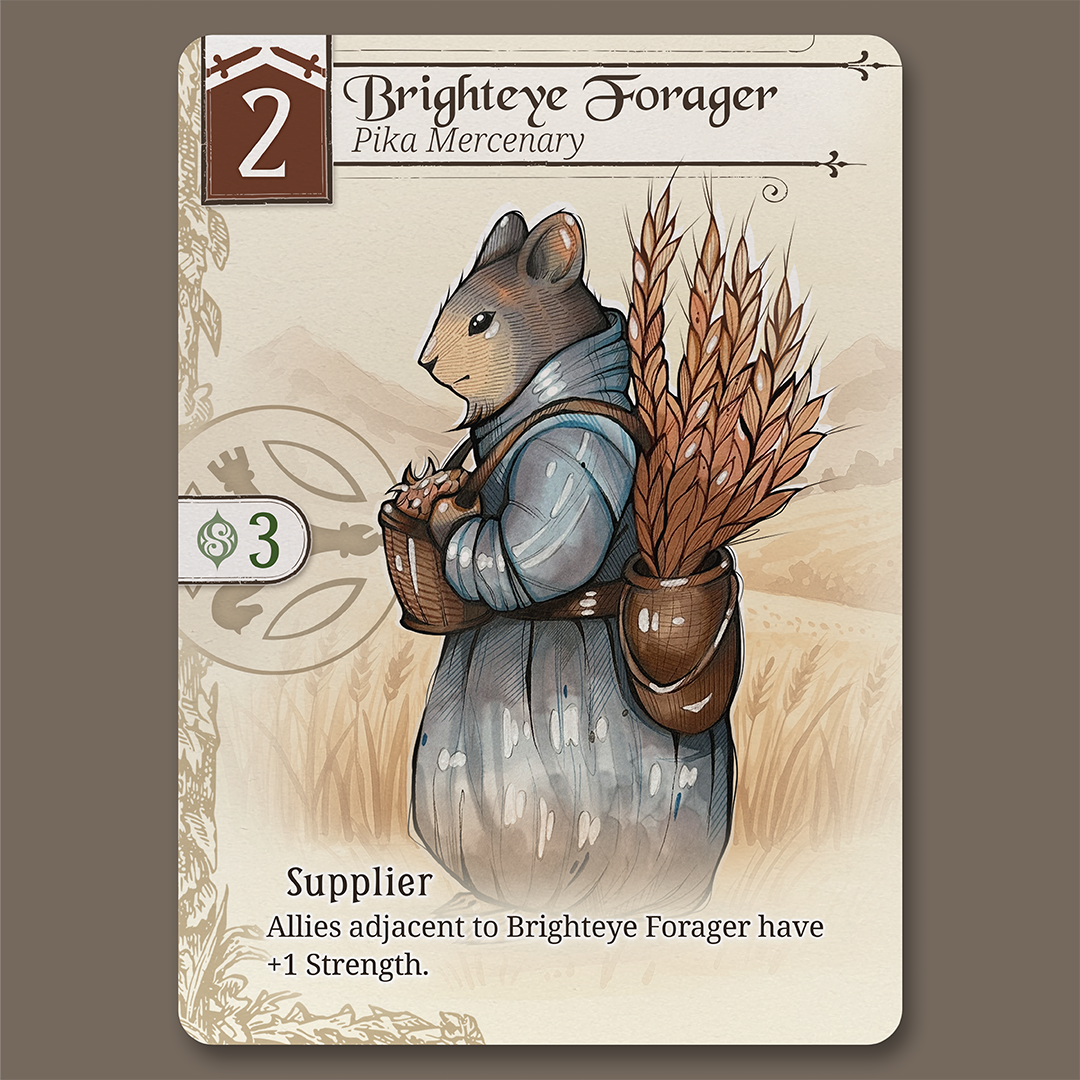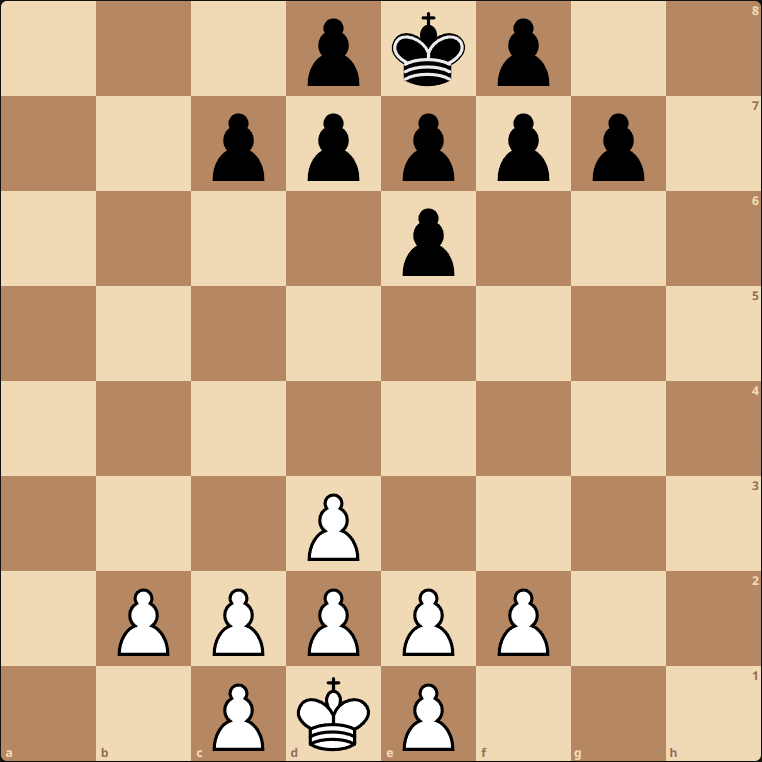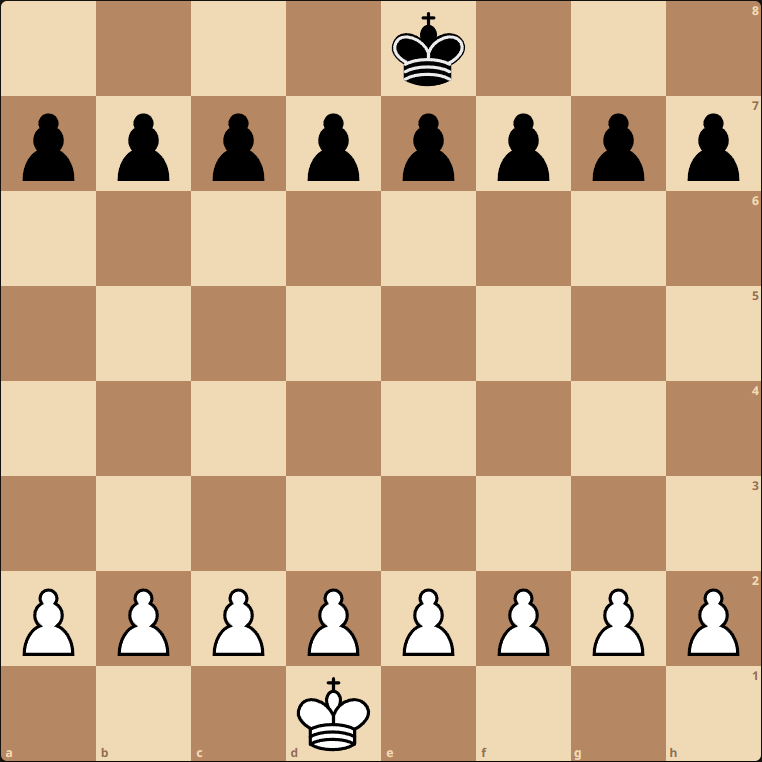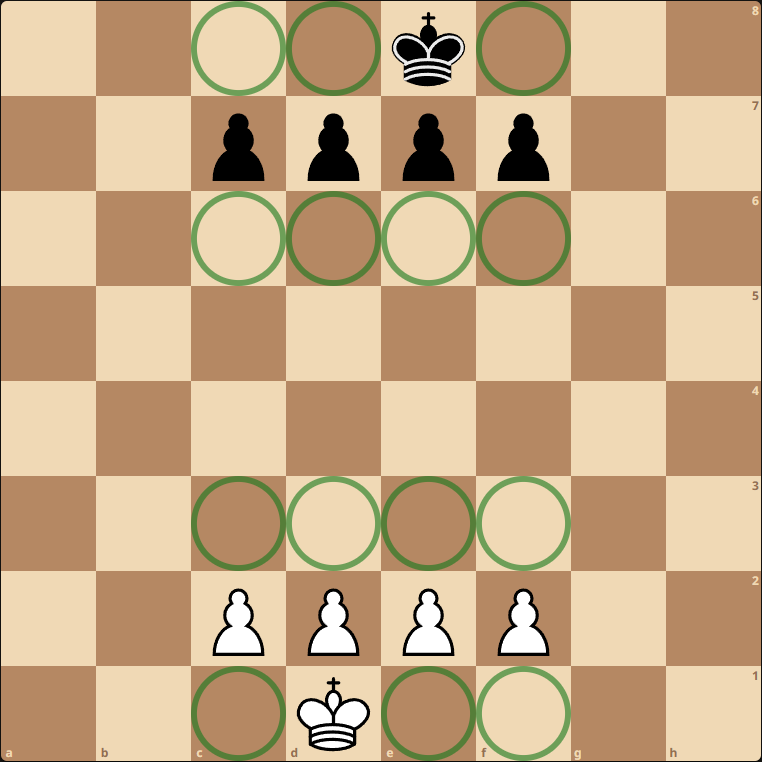Sylvan Tactics: Chess-Inspired Lessons in Design Iteration
When we first conceived of Sylvan Tactics, we started with a simple premise: What if you could deploy your chess pieces repeatedly? Rooks, Bishops, and Knights would arrive as cards from your hand (Mercenaries); Pawns would be cheap, replaceable blockers; the King and Queen would remain singular, high-stakes anchors. From there we pushed further. What if your pieces could survive some attacks? To support that we introduced a simple Strength mechanic for Mercenaries and attacks that targeted any adjacent space around a piece.
If this otter (Strength 4) attacked the pika (Strength 2), it would be an instant kill (against any unit with Strength 4 or less)
If this pika (Strength 2) attacked the otter (Strength 4), it would cause the otter to become wounded (against any unit with Strength 3 or higher). Wounded units die the next time they are attacked regardless of Strength.
White’s Mercenary can attack any adjacent space as a separate action during their turn - even diagonally - as a Rook. If the attacker’s Strength is less than the defender, then the defender would remain with a wound and no pieces would move.
Those key ingredients gave us a kinetic, card-driven battle on an 8×8 board… but months of playtesting have taught us some important lessons.
Lesson 1: Infinite Pawns = Infinite Traffic Jams
This isn’t very fun…
If you can keep placing Pawns, the board gets more crowded turn by turn. Lines to the enemy King don’t open. They get clogged up. To relieve the gridlock, we tried a cap: max of 4 Pawns (starting with 3 on the board) so you had to choose your speed bumps carefully. That was better, but it revealed a new problematic play pattern.
Lesson 2: Open Lanes Supercharge Line Movers
Look at all this space!
With fewer Pawns, Rooks became the universal MVP. Dropping one in your back row usually meant it could threaten the enemy’s back row in a single move. Bishops came next: still fast, though constrained to diagonals. Knights? They struggled to matter. L-jumps couldn’t match straight-line sprints through the thinned midboard. The “best” plays warped toward kamikaze lanes: throw a Rook or Bishop down a highway and trade up before the opponent could react. Knights were left playing defense.
Why did this happen? Because we’d quietly deleted a pillar of chess.
Lesson 3: Chess Is an Attrition Engine (And Pawns Are the Gears)
In chess, Pawns are the gatekeepers. They lock big pieces early, then unlock them as the line thins. That ebb and flow is how piece values breathe over the course of a game: Knights shine early when boards are tight; Rooks and Bishops take over late when corridors open. We had removed that pacing by letting Pawns be endlessly replaceable.
So we asked: what if we leaned back into attrition?
Big Change #1: Full Pawn Line, No Replacements
We recently started testing a version that begins with a full line of 8 Pawns and removes Pawn redeployment entirely. Mercenaries (your Rooks, Bishops, Knights) still cycle in via the shared deck, but Pawns don’t come back.
This feels more like two armies clashing anyway…
It clicked.
Piece values rebalanced. Knights regained early-game purpose; Rooks and Bishops still power the mid-to-late game—but they have to earn their lanes. You have to plan ahead for their attacks and when they happen they feel earned.
Position matters more. You can’t spend a single Sigil to drop a fresh Pawn that bricks an attack. If you want to shut a door, you’ll pay for it by placing a Mercenary. Which are expensive, finite resources (dependent on card draw) that you would much rather save for an attack run.
The board tells a story. Lines open as casualties mount, turning every exchange into tempo and territory.
Why It Feels Better (And Tenser)
We want every action to feel important, every decision to carry weight, and every game to crescendo. Removing Pawn redeployments does all three:
Permanent losses, rising stakes. As your Pawns fall, your King takes 1 morale damage each time. That drip of pressure turns the midgame into a fuse. You feel the cost of every trade when the board state also reflects your total Health. Kings start at 10 Health, so if you lose all Pawns your King is extremely vulnerable to direct attacks with only 2 Health remaining.
Natural comeback windows. Fewer Pawns mean more paths to the enemy King. If you’re behind on health, you might be ahead on lanes. Giving you a chance to break through with sharp positioning or a timely Mercenary.
Cleaner card play. With Pawns no longer serving as emergency sandbags, your tactical choices shift toward proactive setups instead of reactive plug-the-gaps.
Big Change #2: Diagonally-Attacking Pawns
From the start, we wanted to keep things as simple as possible. And that meant giving all pieces the same attack options. We were fairly committed to the omni-directional attacks, but this resulted in absolutely brutal Pawn defense tactics. Since you can attack multiple times during the same turn by spending the appropriate Sigils, that meant that any incursion into your opponent’s back line was an almost certain death sentence carried out by Pawns.
With the old omni-directional Pawn attack rules, each of these positions were vulnerable to double-attacks… killing even the strongest Mercenaries who dared to venture out.
We decided to go back to diagonal-only attacks for Pawns, but for now that also includes the ability to attack diagonally backwards. We feel like this is a great middle ground where blind-spot positional tactics are now valid, but your back line won’t be completely vulnerable to flanking.
Now with Pawns only able to attack diagonally, Black’s Bishop can safely position in front of White’s Pawn.
A Designer’s Shortlist (What We Kept vs. What We Bent)
Borrowed from chess
8×8 board, classic movement rules
The opening density and late-game clarity that a full Pawn line creates
The emotional arc of attrition: trading to open lines
Bent for Sylvan Tactics
Adjacency combat with Strength checks instead of occupying the target’s square
Sigils as a shared, tempo-gating resource for movement, attacks, and card play
Mercenaries as redeployable, ability-laden units that reshape the board state
Morale damage to the King on each allied death (no check/checkmate)
One-deck mind games: both players draw from the same arsenal, so reading the situation matters as much as raw calculation
Where We’re Headed
Our recent changes have made games sharper and more inevitable—the best kind of endgame, where both players can see the climactic lines forming and still fight over which one lands first.
We’re continuing to test openings, Sigil pacing, and card text to keep the early board chewy and the late board explosive. Want to help shape it?
Join our Discord and jump into a playtest. Bring your chess instincts… then get ready to unlearn a few of them in the woods.








